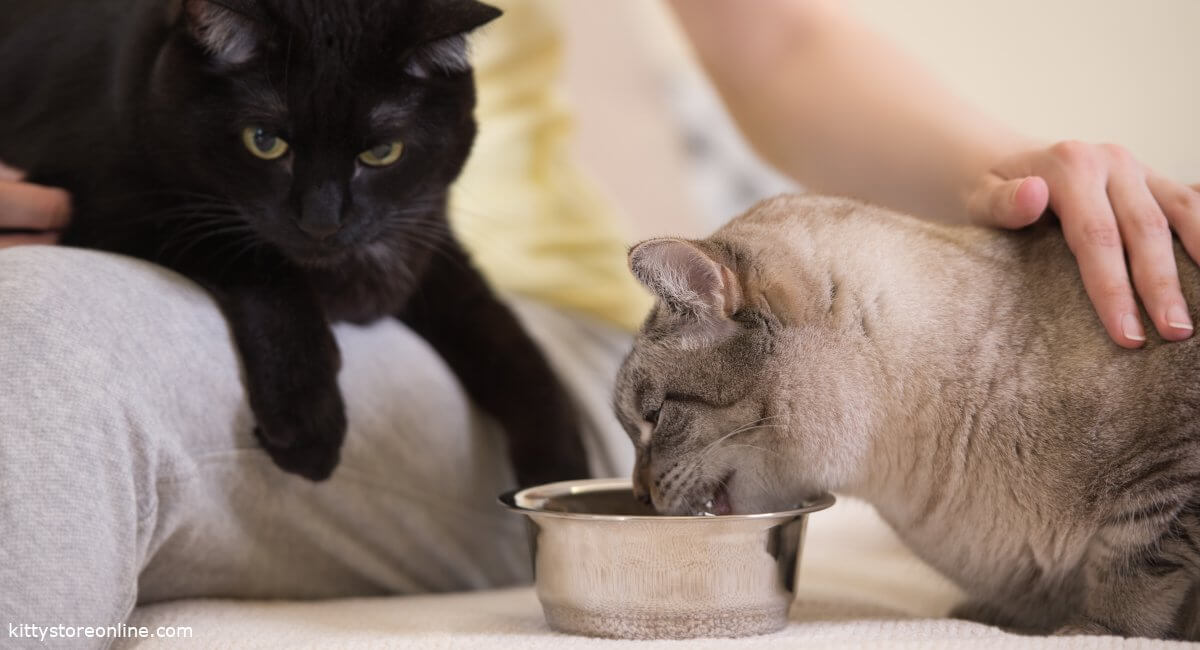As an opposite to the ready-made food for cats, more and more cat owners inform themselves about the new trend Barfen. The term Barfen means bone and raw food (biological and species-appropriate eating) for cats: Fresh meat, offal, bones and supplements self-assembled.
BARF simply explained
In contrast to cooked canned food, only raw meat goes into the bowl when barfing. The diet meets the natural eating behavior of cats in nature, when they eat mice or birds. Prey animals of cats contain the optimal composition of nutrients. This consists of 50 to 60 percent protein, between 20 and 30 percent fat and under 10 percent carbohydrates. Cats eat from prey animals not only the muscle meat, but also fur/feathers, bones and offal. In order for the cat to get all the nutrients it needs when barfing, nutrients and vitamins must be added to the raw meat/offal. Small amounts of vegetables are often added to help regulate the cat’s digestion.
Vitamins and minerals in barfing
Instead of magesium glucamate in ready-made products, dried algae (spirulina) are added when barfeeding. The cat receives vitamin A and calcium not artificially produced, but through cod liver oil and ground eggshells. Seaweed meal provides the cat with iodine. Instead of vitamin B powder, brewer’s yeast is used. The required amount of vitamin E is replaced by wheat germ oil. Nutrients, carbohydrates and protein are calculated exactly to the cat breed, age, sex, weight and state of health. So you need to deal in advance with the diet of your cat In case of questions I turn to animal nutrition experts and veterinary institutes or in reference books.
Natural nutrition made easy
Getting high-quality meat and ingredients, measuring, weighing, packing and freezing in the right portions is a lot of work. Often, there is not enough time or cat owners are not sure that they are doing everything right. Because the trend is becoming more and more popular, large feed manufacturers and butchers now also carry ready-made Barf products in their assortment, which can be defrosted and fed as needed. Cat owners who prefer to put together the food for their velvet paw themselves benefit from ready-made mixtures of vitamins and minerals.
Advantages and disadvantages barfing
With the natural species-appropriate nutrition method you avoid reports of impurities and rotten meat in canned food. You have an overview of what your cat eats. On the other hand, raw meat can be infected with pathogens. Also for young and weakened animals Barfen holds a residual risk just like for children and old humans, who live with in the household. If only meat suitable for human consumption is used for barfing, this risk can be minimized. It should also be noted that the purchased raw meat contains less blood and vitamins due to storage. Without bones and with lean meat, the ratio of calcium or fat is not balanced. Cats need amino acid taurine, which is contained in mice. They cannot produce this themselves. This must be absolutely added in the Barf nutrition. Barf nutrition is usually more costly than nutrition with canned food. In addition, absolute hygiene is required. The advantages at a glance:
- Feed tolerance and digestion improve.
- The cat defecates less because it utilizes the nutrients better.
- Fewer feed allergies occur.
- The musculature and the immune system become stronger.
What meat to barf?
With the exception of pork, all meats are suitable for barfing. White mice and day-old chicks are also suitable. However, these must not be heated so that the bones do not splinter. Soft bones are suitable for cats: Necks of turkeys and chickens, wings, carcasses, thighs. Bones with a lot of cartilage (breastbone) have a lower calcium content than other bones. They alone are not sufficient in bone feeding. As for offal, rumen, lung and udder are less suitable for cats because of the high percentage of connective tissue. They can utilize this poorly. Fish also belongs on the cat’s menu once or twice a week.
What else should I be aware of?
Too much fat can stress the cat’s liver. Recommended 8-10 percent fat per feeding. Carbohydrates from rice. Cats cannot digest potatoes and pasta. Cats may reject offal and fish. The missing nutrients must be made up in some other way. If the cat rejects bones, you may add bone meal or ground bones to the food, because the cat needs calcium and phosphorus for muscle activity, blood clotting, bone metabolism, and tooth structure. Cats with kidney disease benefit from ground eggshells instead of bone meal. It consists of 38 percent calcium and a very small amount of phosphorus.
First steps in barfing cats
Cats are creatures of habit and do not like experiments, especially with food. In the beginning, replace 20 percent of the normal food with Barf products. Instead of fresh meat chunks, try mixing ground beef into the food. Once the cat gets used to it, increase the percentage of raw meat and add some pureed fruits and vegetables. Within three to four weeks, the change in diet should be complete. However, it is also possible that the cat does not get used to the new diet, but continues to prefer the old food. In that case, you should maintain it.
